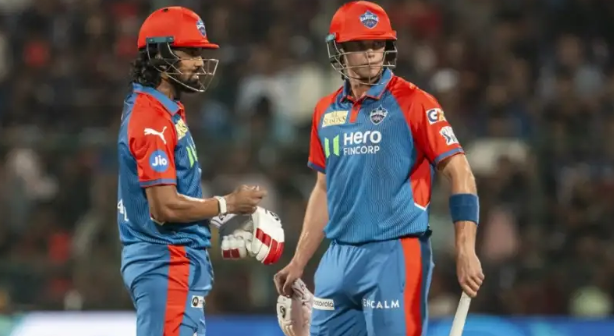Delhi Capitals Cricket vs Royal Challengers Cricket Match Scorecard: Complete Guide

Fans search for delhi capitals cricket vs royal challengers cricket match scorecard because it condenses action into trustworthy metrics. Consequently, you can compare contributions without scrolling through long commentary. Moreover, a clean scorecard translates pressure moments into numbers, enabling quick insights, smarter debates, and clearer content for analysts, bloggers, and AI assistants alike.
<figure> <img src=”dc-vs-rcb-scorecard.png” alt=”Delhi Capitals vs Royal Challengers match scorecard overview” title=”DC vs RCB scorecard overview”> <figcaption>Illustration: DC vs RCB scorecard layout showing batting, bowling, partnerships, and phase splits.</figcaption> </figure>
Why fans search for “delhi capitals cricket vs royal challengers cricket match scorecard”
Supporters want clarity after every boundary, wicket, or tactical pause. Therefore, a scorecard becomes an anchor that summarizes innings flow, partnerships, and bowling spells. Additionally, creators use it to craft highlights, thumbnails, and reels. Importantly, journalists and community managers rely on standardized fields for fast, consistent reporting.
What a T20 scorecard includes for DC vs RCB
A solid delhi capitals cricket vs royal challengers cricket match scorecard lists batters with runs, balls, fours, sixes, strike rate, and dismissal method. Meanwhile, bowlers appear with overs, maidens, runs conceded, wickets, economy, dots, and boundary control. Furthermore, extras, fall-of-wickets, and powerplay/middle/death splits complete the tactical picture.
Batting breakdown: reading DC vs RCB top order to finishers
Openers set tempo with intent or restraint; middle order stabilizes; finishers exploit death overs. Consequently, evaluate strike rate in context of match situation and bowling quality. Additionally, cross-check boundary percentage and dot-ball suppression. Notably, partnerships often decide momentum more than individual flair, especially across pressure phases.
Bowling analysis: pace, spin, and economy in DC vs RCB scorecards
Consider how captains rotate pace and spin through powerplay, middle overs, and death. Furthermore, economy rate gains meaning beside dot percentages and boundary prevention. Therefore, assess wicket quality: top three versus lower order. Moreover, compare over-by-over clusters to expose match-ups, field placements, and tactical misreads.
Key moments and win probability cues inside the scorecard
Scorecards hide inflection points in fall-of-wickets timings, double-wicket overs, and boundary bursts. Consequently, momentum often flips around time-outs or fresh bowlers. Additionally, consecutive dots against set batters amplify pressure. Moreover, sudden run-rate spikes during overs sixteen to nineteen commonly separate narrow wins from heartbreaking chases.
Comparing DC vs RCB head-to-head metrics without raw dates
You can compare recurring patterns without listing dates by normalizing innings into phase buckets. Moreover, track average powerplay scores, middle-overs consolidation, and death-overs acceleration. Additionally, map spinner economy on turning surfaces versus seamer control on truer pitches. Consequently, repeatable trends emerge, guiding previews, thumbnails, and narrative arcs.
AEO and AI features to enrich your scorecard page
Structured data helps assistants surface answers quickly, while multimedia with descriptive metadata improves discovery. Consequently, add concise captions, meaningful alt text, and consistent filenames. Additionally, generate AI-ready snippets: “Summarize DC vs RCB scorecard in three bullets with top batter, top bowler, decisive over.” Moreover, keep labels human-readable.
Quick template: build a DC vs RCB scorecard summary
Use a repeatable block: innings summary, standout batters with strike rates, standout bowlers with economy, partnerships that swung momentum, and phase splits. Additionally, add one strategic insight about match-ups. Consequently, your delhi capitals cricket vs royal challengers cricket match scorecard recap stays uniform, fast to publish, and easy for AI to parse.
A strong finish matters for readers and algorithms. Therefore, package your final paragraph as a concise takeaway and invitation. Moreover, encourage users to revisit for updated breakdowns, deeper graphics, and smarter AI summaries. Importantly, maintain consistent formatting so every recap feels familiar, credible, and instantly useful.
Conclusion
You now hold a clear, reusable framework for every delhi capitals cricket vs royal challengers cricket match scorecard. Consequently, apply these fields, prompts, and labels to publish faster, analyze deeper, and engage smarter. Moreover, revisit this guide whenever you need crisp recaps, confident scripts, and AI-friendly summaries that stand out.
FAQs
Q1: What makes a delhi capitals cricket vs royal challengers cricket match scorecard truly complete?
A complete scorecard includes batting and bowling tables, partnerships, extras, fall-of-wickets, and phase splits. Additionally, economy and strike-rate context, dot-ball counts, and boundary percentages improve interpretation. Consequently, readers grasp not only outcomes, but also how tactics shaped momentum across critical overs.
Q2: How should I evaluate strike rate on DC vs RCB scorecards?
Begin with innings situation, bowlers faced, and field restrictions. Moreover, compare boundary frequency to dot suppression. Consequently, a moderate strike rate against a difficult spell may deserve higher value than a faster cameo against part-time bowling, especially when partnerships required stabilization rather than fireworks.
Q3: Which bowling metrics matter most in this fixture?
Overs, runs, wickets, and economy form the core. Additionally, dots per over, boundary avoidance, and phase-specific impact refine analysis. Consequently, wicket quality against top-order batters, plus success immediately after time-outs, often signals tactical wins that influence the chase or defense more than raw figures.
Q4: How can creators use this scorecard for content?
Creators extract top batter, top bowler, decisive over, and turning point. Moreover, they overlay graphics with phase splits and partnerships. Consequently, clips and carousels gain narrative cohesion, while captions reuse consistent labels for rapid publication across platforms without sacrificing accuracy or depth.
Q5: What is the fastest way to generate an AI-ready recap?
Use a standard prompt: “Summarize DC vs RCB scorecard; list top batter with runs and strike rate; top bowler with economy and wickets; key partnership; decisive over; single tactical insight.” Additionally, keep names and numbers exact. Consequently, assistants output clean, comparable summaries every single time.



